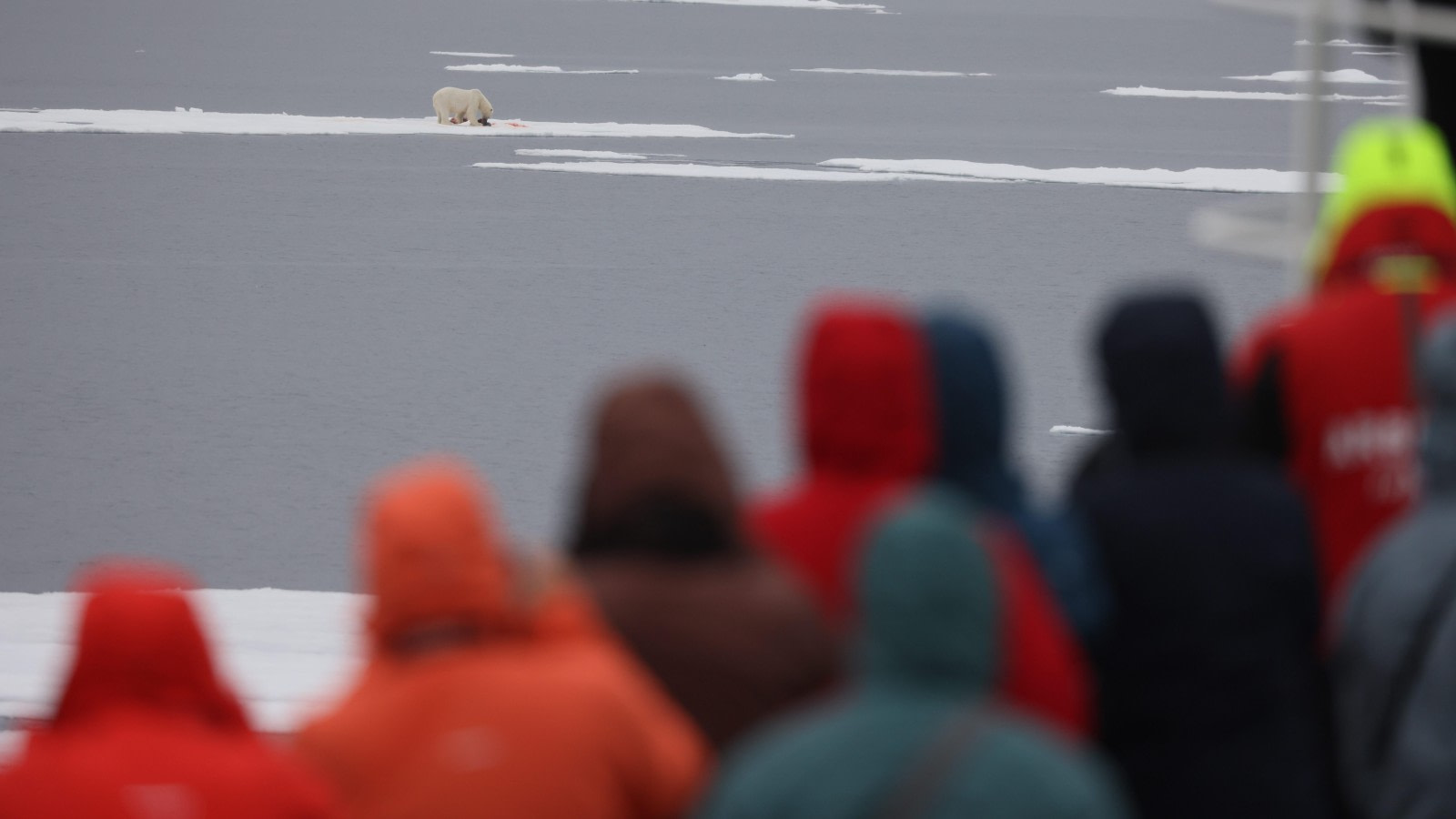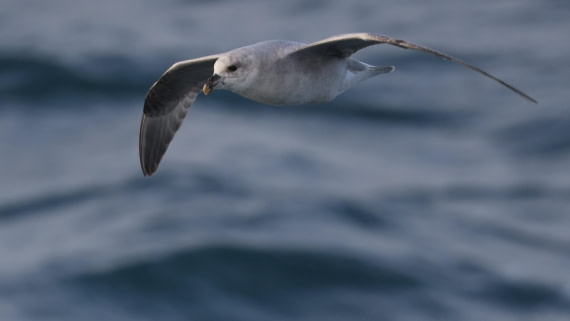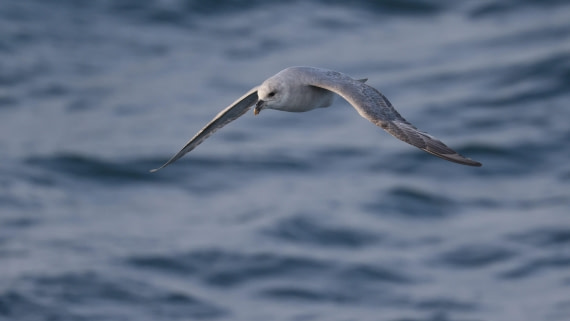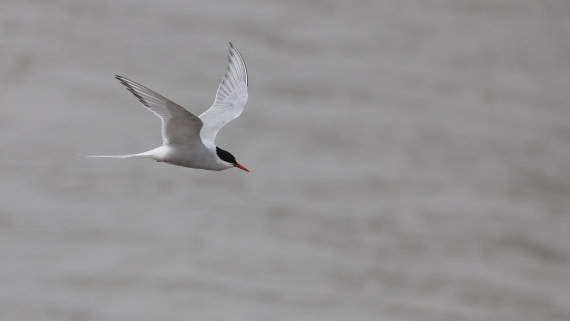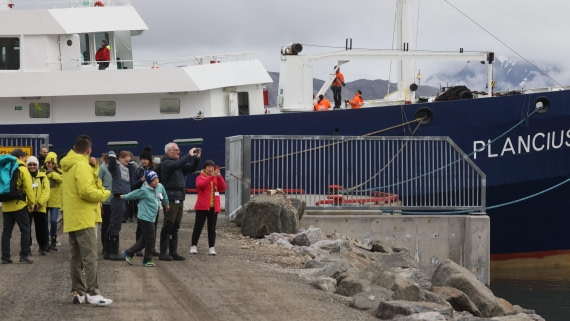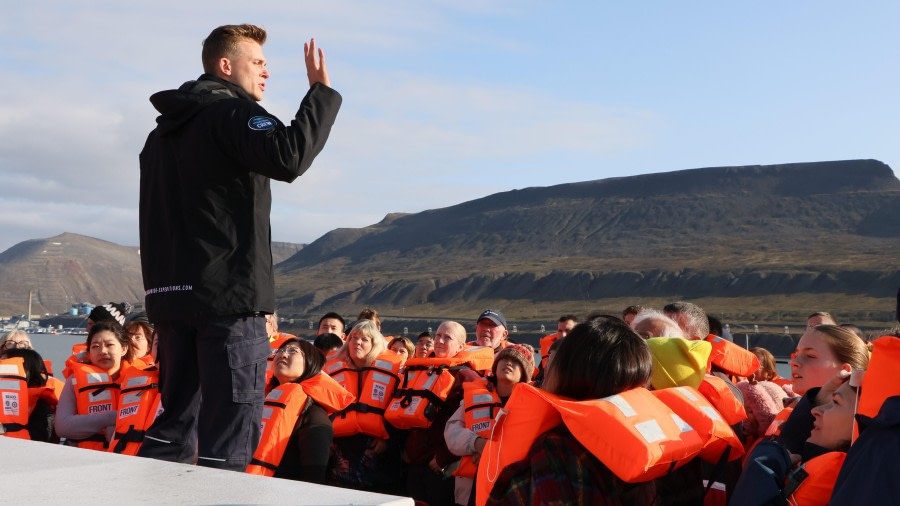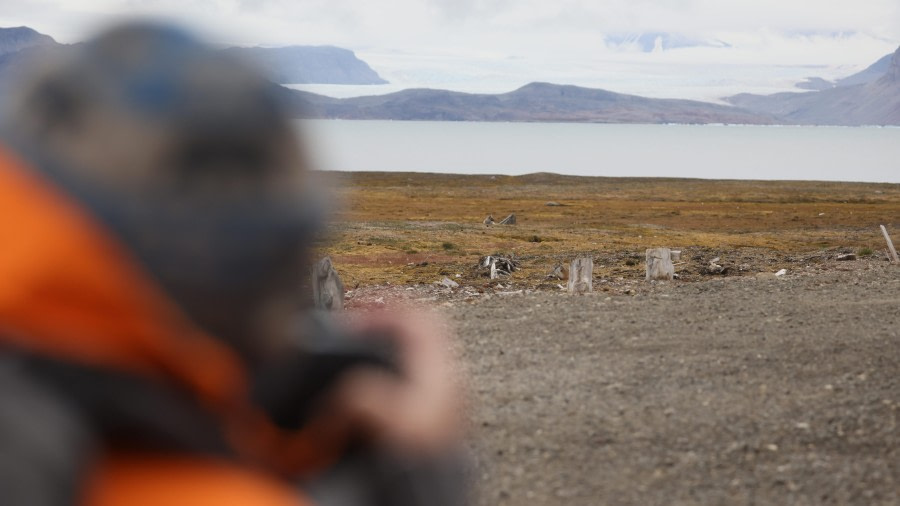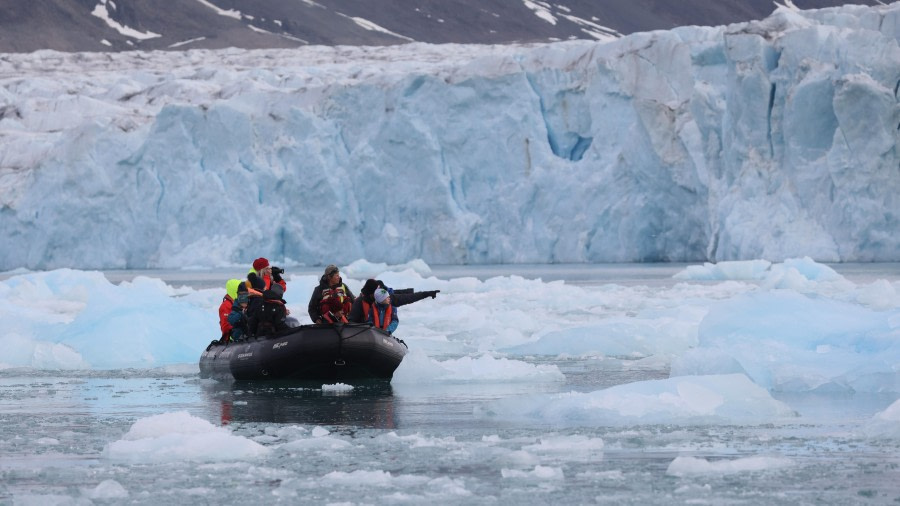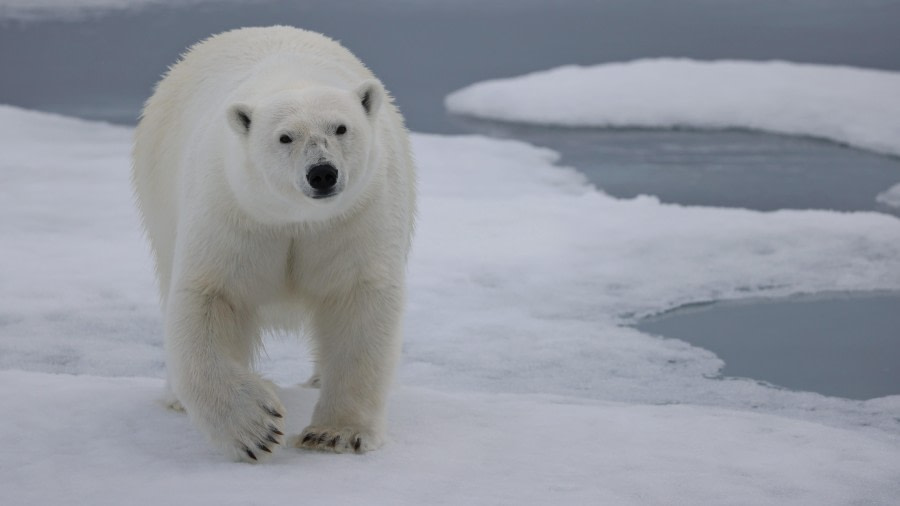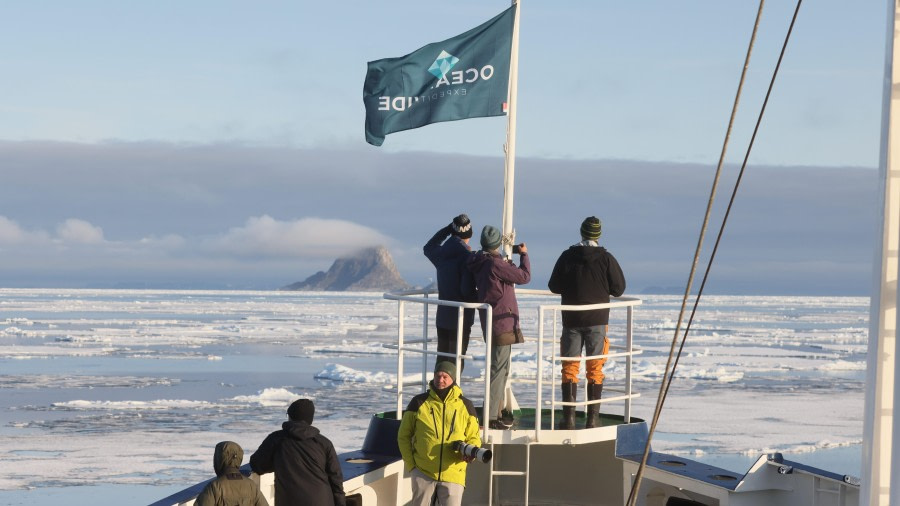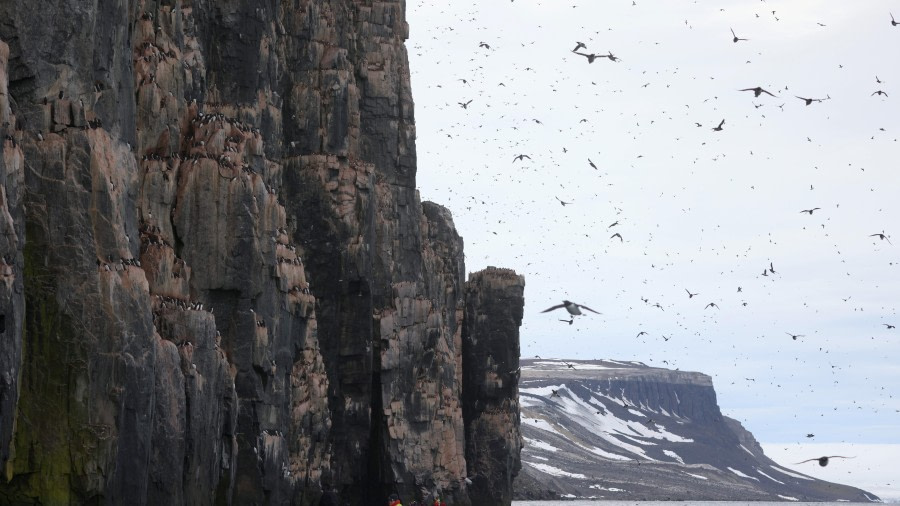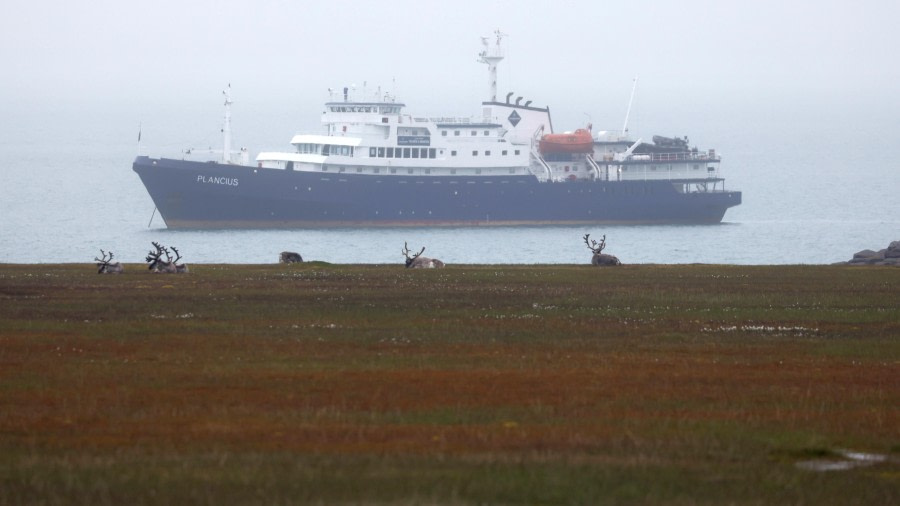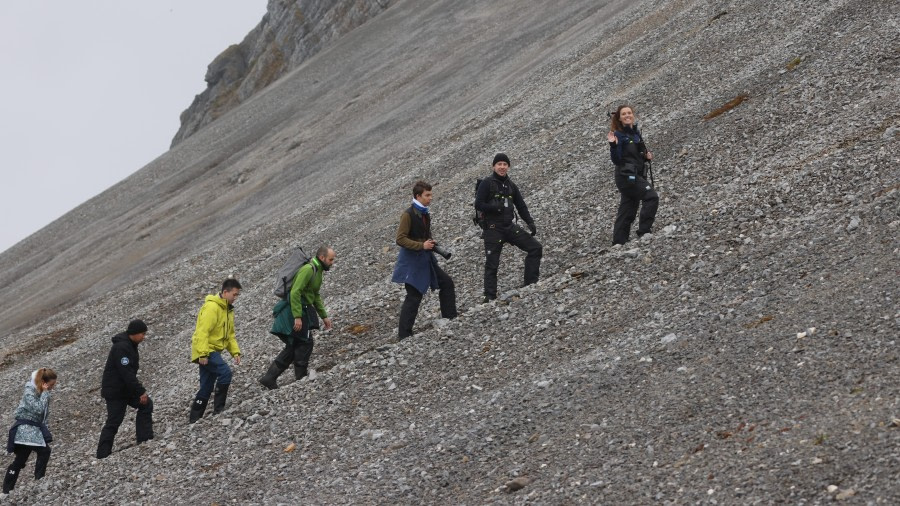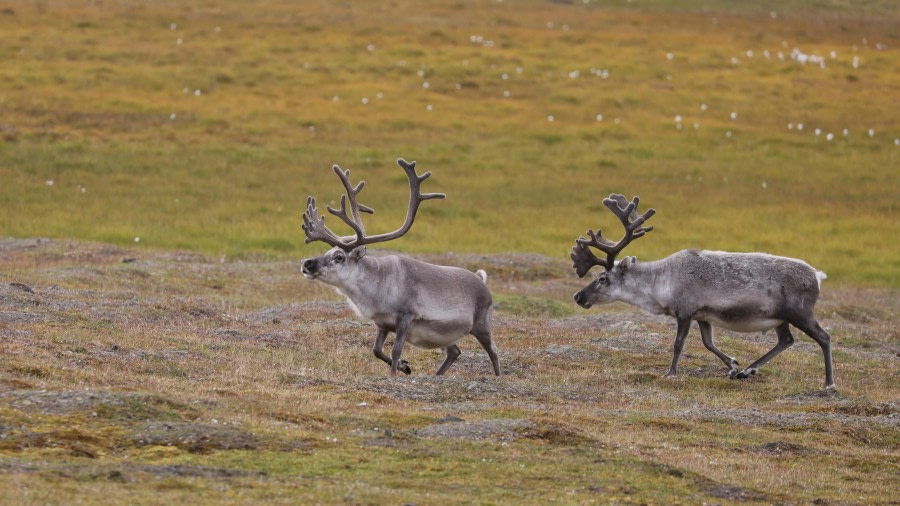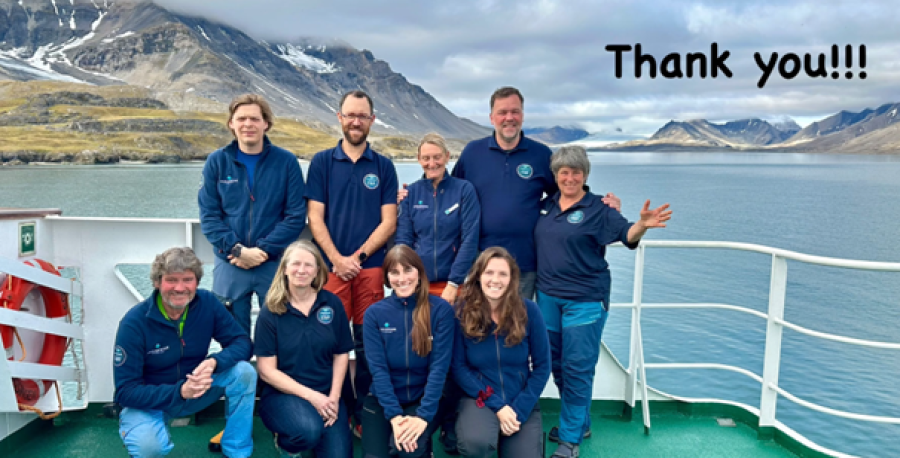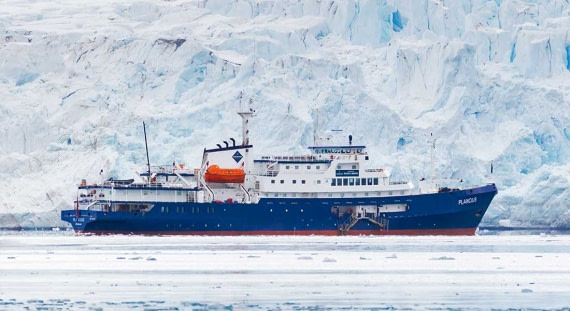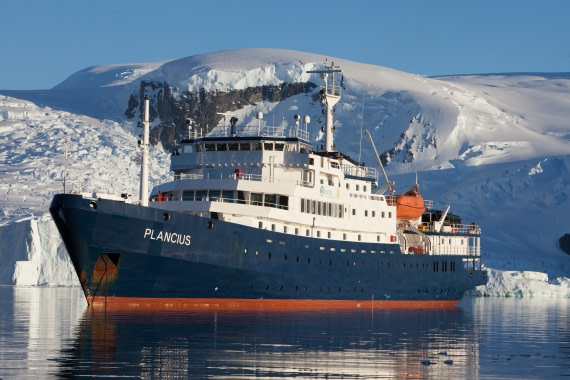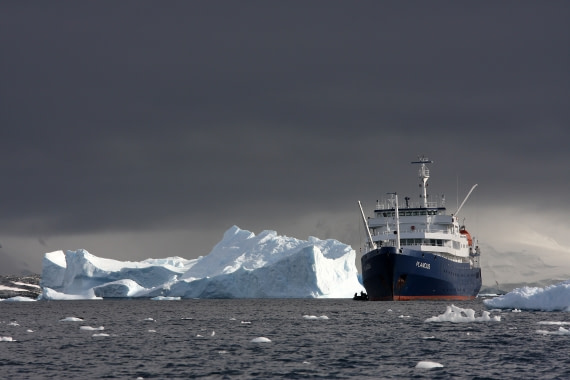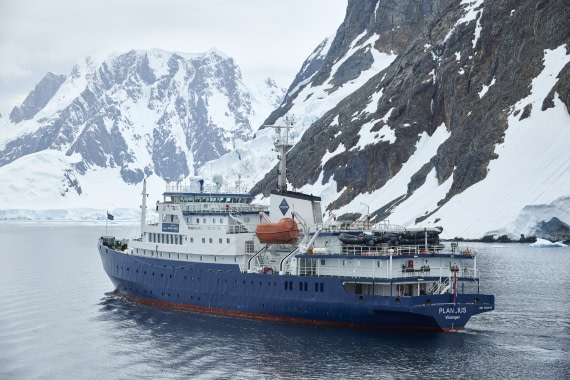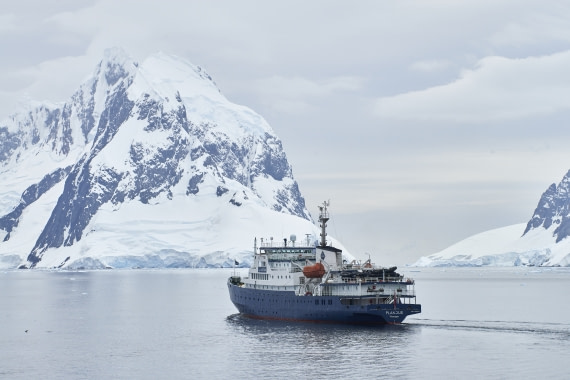| Date: |
27.07.2025 |
| Position: |
78°59.8’N / 011°25.4’E |
| Wind: |
N1 |
| Weather: |
Partly cloudy |
| Air Temperature: |
+5 |
When Rinie’s wake-up call sounds through the ship, we are already sailing through the mouth of Kongsfjorden, or Kings Bay in English. It is a very open fjord with amazing views, surrounded by mountains and glaciers in the distance. Not much time went by, and we hear Rinie again, this time announcing a pod of belugas that can be seen around the ship!
After a lovely breakfast, we meet in the lounge for some essential and mandatory briefings, only after which we will be allowed to leave the ship. AECO, the Association of Expedition Cruise Operators, of which Oceanwide Expedition is part of, has a set of basic rules to follow. Rules such as to not pick any flowers, keep a distance to all cultural remains, and be mindful and to avoid trampling on fragile vegetation.
Due to our location within polar bear habitat, and the fact that we could encounter them at any time, Rinie explained to us the potential dangers and what we should do on land in case we would meet an unexpected visitor.
During the briefings, Plancius went alongside in Ny Ålesund and we were now ready and prepared to discover the small settlement. It was established in 1916 by Kings Bay Kulkumpani to extract coal. After several accidents occurred in the mines in 1953 and 1962, this forced the closure, and the town has slowly shifted towards a science station. Today, eleven countries have permanent stations, but lots of researchers from other countries come to work here too. There are about forty people living all year round, and in summer the community can grow to about 180 people.
We set out for our day of discovery. Our Young Explorers met to write postcards from the northernmost settlement in the world, and we wonder who will make it home first: themselves or the post cards? We enjoy the educational history museum, observed some foxes, walked the quiet streets, and some even indulged in eating ice cream.
At 11:00, we met at the bust of Roald Amundsen, the great Norwegian explorer. He attempted to fly over the North Pole with two planes in 1925, however, it was an attempt that failed. Later, in 1926, he made a new attempt, this time with the airship Norge. For this adventure, a metal mooring mast of 35m hight was built and is still standing today, a relic of the past. They successfully left Ny Ålesund on the 11th of May 11 and made it to Teller, Alaska on the 14th of May, writing history as the first to fly over the North Pole.
After returning to the ship for a delicious lunch buffet, a mandatory briefing on polar bear country behavior and safe Zodiac operations prepared us for the afternoon's adventure.
Plancius has sailed across the fjord, and we are now anchored close to Blomstrandhalvøya where we will go ashore. The landing site is called Ny London (Ny = New) and has been established by a British company called Northern Exploration Company (short NEC) in 1911 to extract marble.
We split up in different groups, hikers, medium walkers and leisurely walkers and started discovering the island. Two cabins, old infrastructure and rusty machines, all of which are now protected cultural heritage items, tell the story of big dreams. The story of business ideas, followed by big investments, followed by big disappointment. The marble that seemed extremely promising, ended up being unusable and the extraction found an end already in 1920. All infrastructure was then just left in place, as it would have been costly to remove.
We set off on different hikes, observed flowers, birds and reindeer, and could see a pod of belugas out in the sea. We enjoy views out over the fjord and towards the mountains and saw glaciers in every valley throughout this impressive fjord.
Happy and tired after a few hours on land, we came back onboard Plancius for a short recap by Elizabeth about science in Ny Ålesund, and an introduction to macro photography, by Valeria, in hopes to get to discover the tiny world of plants tomorrow.
Filled with beautiful impressions, emotions, and images, we end our day in different ways - some end the day in the lounge, others outside enjoying the scenery while sailing out of Kongsfjorden and north bound. We are for sure all excited about the next day to come.
